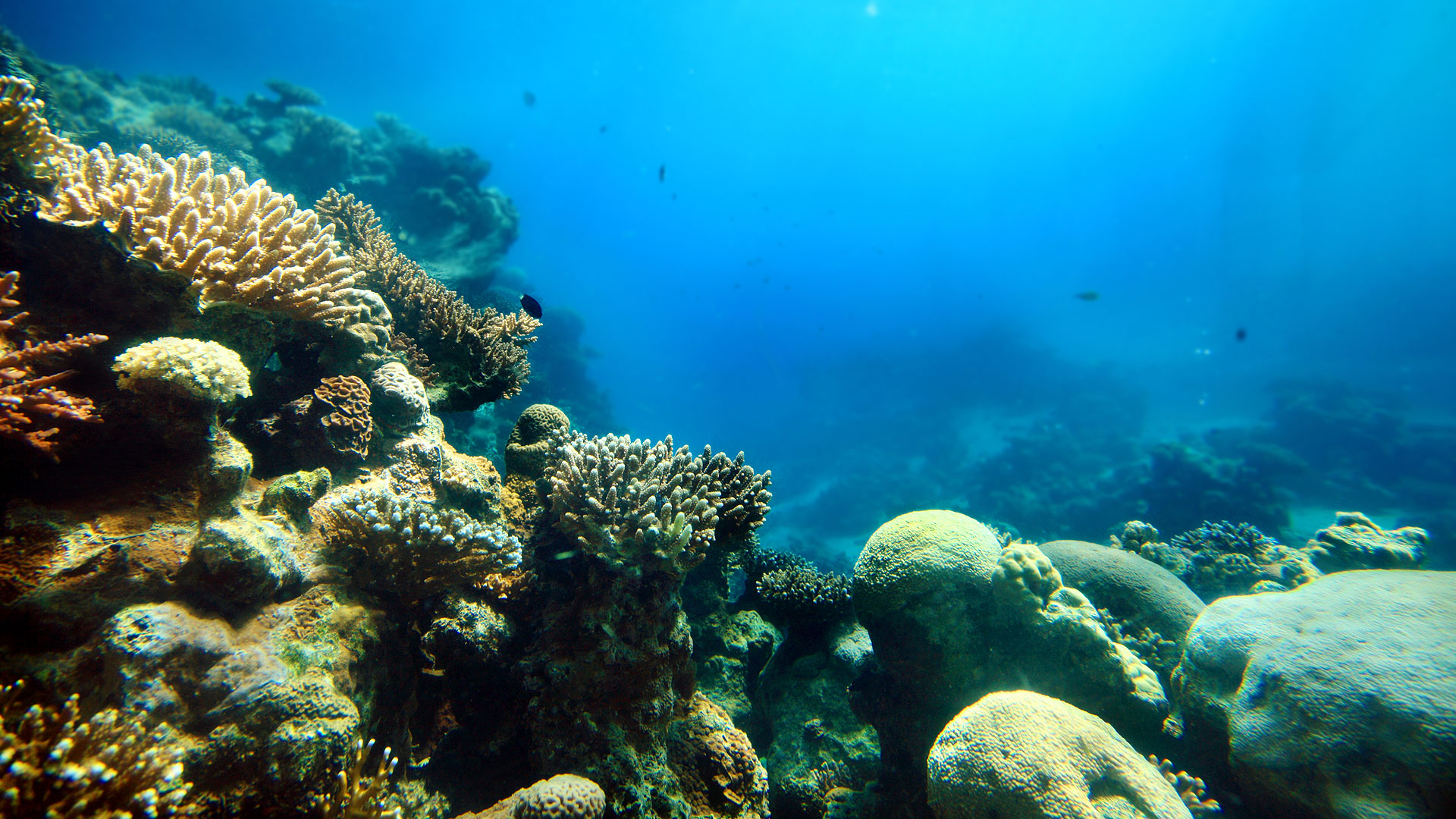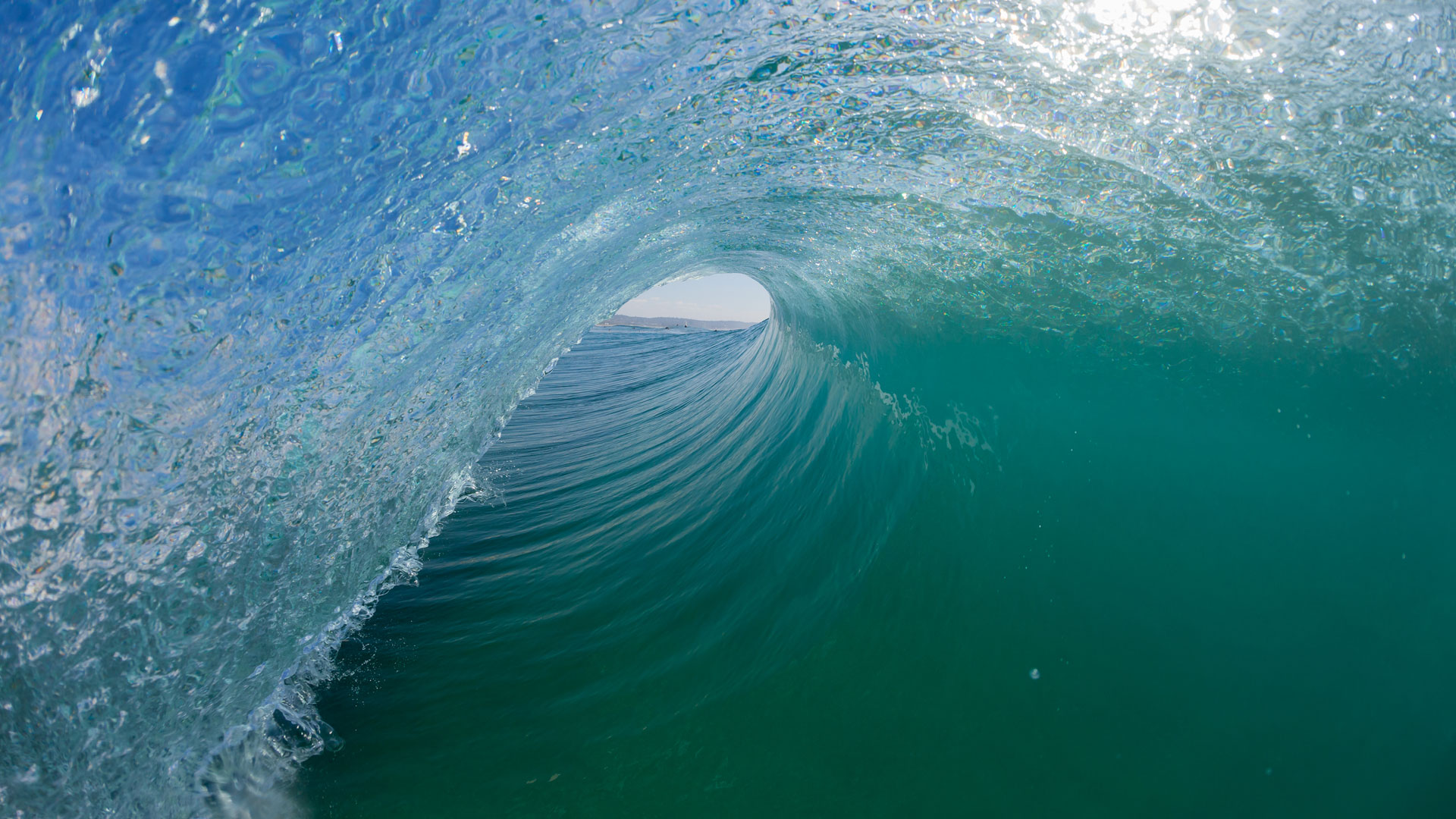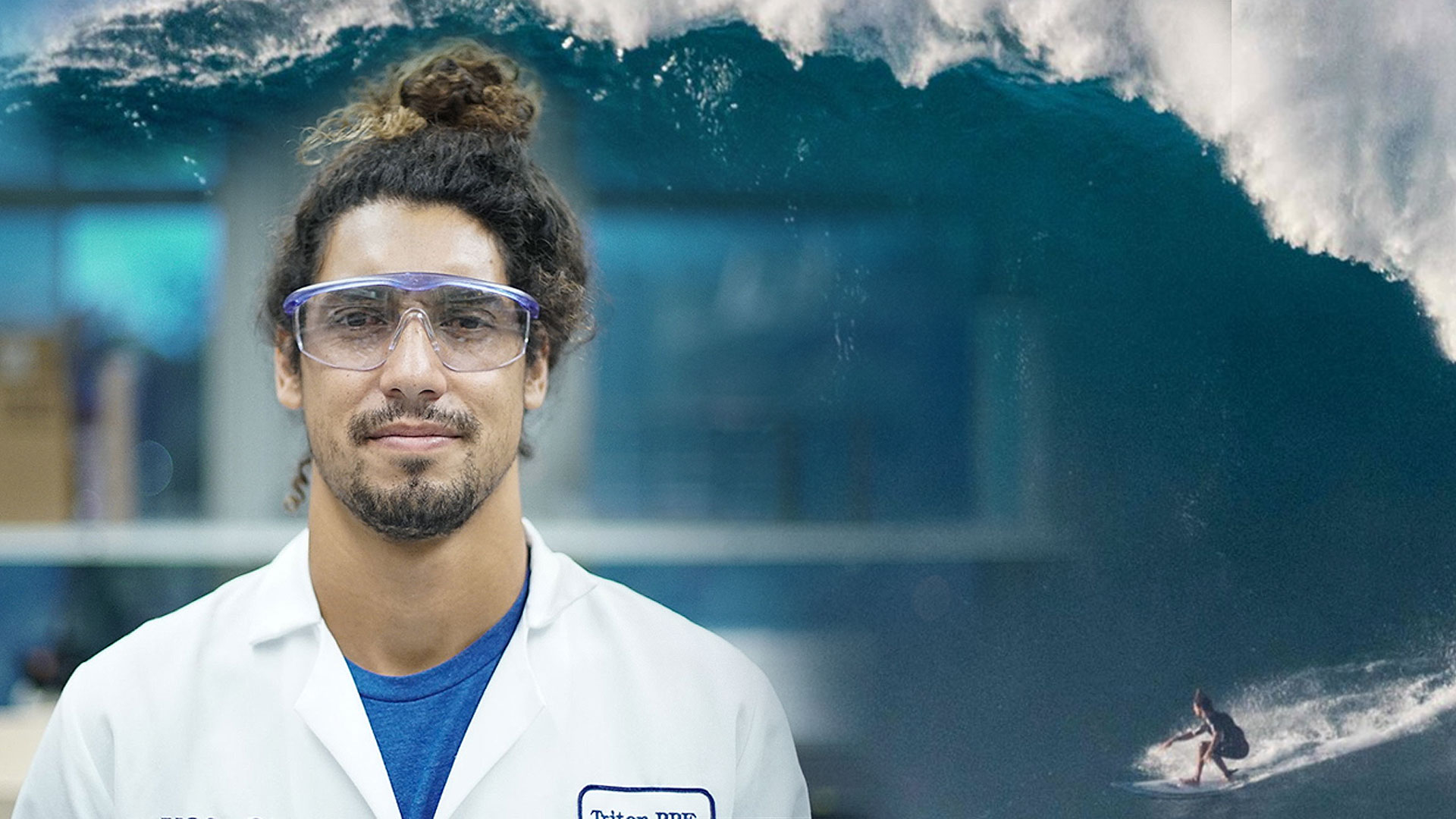Coral reefs have become an emblem of the climate crisis. What the headlines aren’t telling you is that the key to saving corals may lie within their very own DNA.
SCIENCE DEEP DIVE: CORAL REEF RESILIENCE
Coral reefs have become an emblem of the climate crisis. Colorfully saturated images of once teeming reefs clash against their “after” photos – bleached and lifeless. The headlines warn us that rising ocean temperatures and fluctuating pH levels are decimating these fragile animals. What they aren’t telling you is that the key to saving corals may lie within their very own DNA.
Though coral reefs only cover about 0.1% of the ocean floor, they are home to at least a quarter of all marine species — supporting 4,000 different species of fish and 800 types of corals. Reefs are essential to human life as well, providing a multitude of goods and services such as food, fisheries, tourism, recreation, shoreline protection, and sources of medicinal compounds.
As climate change ushers in rising sea levels and increased frequency and intensity of storms, coral reefs are more important now than ever. Coral reefs protect shorelines from 97% of the energy from waves, storms, and floods. Millions of people living in U.S. coastal communities rely on coral reefs to buffer the blow of extreme weather events. When reefs become damaged or destroyed, the probability of erosion, property damage, and threat to human life drastically increases.
Climate change intensifies our dependence on the ecological services that coral reefs provide, while simultaneously degrading them. Corals need highly specific environmental conditions to survive, the most impactful of which is water temperature. Tropical corals require water temperatures between 68 and 90 degrees Fahrenheit, and even slight deviations from this range can cause bleaching and death. Research by NOAA found that between 2014 and 2017, rising ocean temperatures caused damage to 70% of the world’s coral reefs.
Increased levels of atmospheric carbon dioxide are causing more CO2 to dissolve into the ocean. This process, called ocean acidification, causes the pH level of the ocean to rise, and inhibits corals’ ability to build their skeletons. In extreme cases, it can even cause them to dissolve.
With the rise in storms, stormwater runoff and sedimentation are dirtying our waters, making it difficult for corals to access sunlight. Although they are not plants, corals rely on direct sunlight for oxygen. A symbiotic relationship with photosynthetic algae called zooxanthellae accounts for 95% of a coral’s energy needs, and gives corals their characteristic vibrant colors. Corals provide algae with CO2, nutrients, and habitat, and in return, algae provides oxygen. Pollution obscures the reef’s access to sunlight, causing bleaching, disease, and death.
That’s a whole lot of bad news. But here’s the good news: Scientists are developing ways to restore reefs by harnessing the genetic resilience of corals.
Coral reef resilience refers to the biological ability of coral reefs to recover from disturbances, such as storms, pollution, and unstable environmental conditions. There are numerous factors that contribute to the overall resilience of a reef, including:
- Biodiversity – The more diversity (genetic variation, species variation, and morphological variation) a reef contains, the better equipped it is to recover from damage or disease.
- Recruitment – This is the process by which drifting planulae (tiny coral larvae) attach and establish themselves as part of the reef community, maintaining high levels of biodiversity on healthy reefs and ensuring recovery of a damaged reef.
- Herbivory – Algae overgrowth inhibits coral recruitment and causes corals to overgrow. Herbivorous species of fish and other marine organisms keep algae under control.
To learn more about reef resilience, we sat down with Dr. Cliff Kapono, a professional surfer, chemist, and native Hawaiian who has dedicated his life to studying and protecting coral reefs.
To read or watch our full interview with Cliff, jump to:
Climate Actionist Spotlight: A Conversation with Dr. Cliff Kapono.
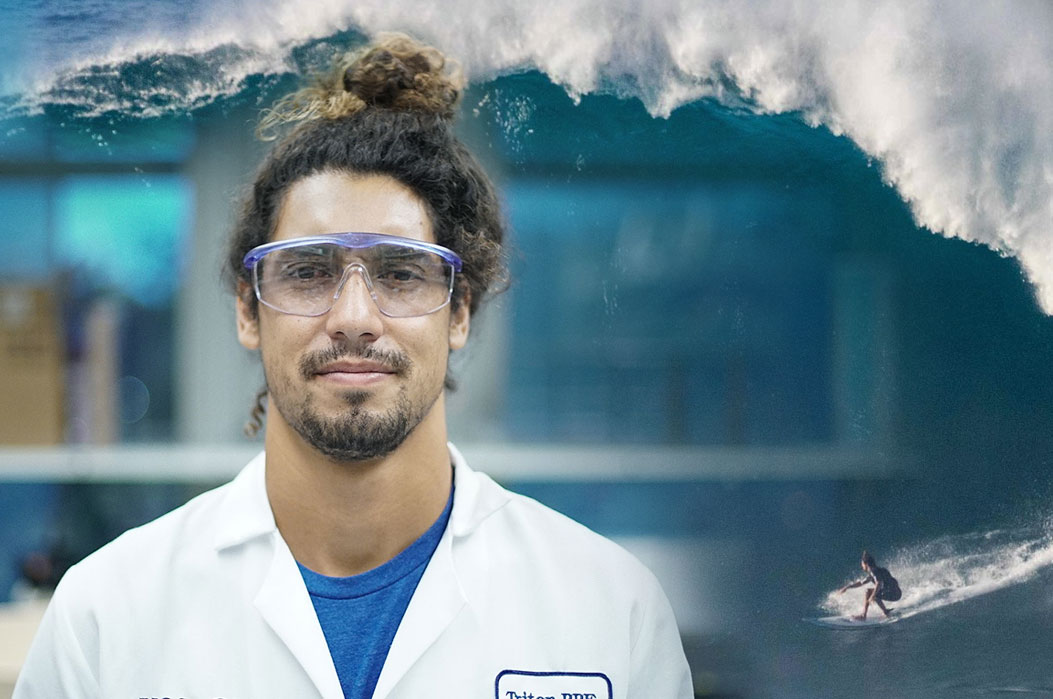
Cliff was born and raised on the eastern shores of Hilo, and learned to surf highly challenging waves at the mouth of the Honoli’i stream. What makes these waves unique is the presence of some of the most resilient coral species on the planet. “Waves break over sand, rock – but the waves that I really enjoy surfing are waves that break over coral reefs,” Cliff told us.
“I’m someone who wants to surf the best waves and find out how to protect them,” said Cliff. From birth, he was indoctrinated into the indigenous Hawaiian philosophy of Aloha Aina, a deep-rooted love and respect for the land that regards the natural world as a family member. For Cliff, conservation is not merely his career; it’s second nature. Today, he balances his surfing career with research that conserves waves through the restoration and protection of coral reefs.
After completing his education, Cliff returned to his home reef at Honoli’i and asked a question: What is it about this reef that makes it so resilient? This question gave rise to the Honoli’i Project, a research study supported by the National Science Foundation.
“The Honoli’i project is about finding reefs that are resilient, reefs that have been smashed by runoff, reefs that are under brown water, and face a lot of pressure from the changing world, much like the people of Hilo,” said Cliff.
Cliff and his team at the Multiscale Environmental Graphical Analysis lab (or, MEGA Lab) use structure from motion photogrammetry, a relatively new imaging technology that can create 3-dimensional maps of coral reefs. The MEGA Lab’s founder, John Burns, was the first scientist to implement this technology in marine research. Cliff and his colleagues dive down to collect images of the reef and then use these images to construct digital models that tell them about the reef’s health and structure.
“I’m someone who wants to surf the best waves and find out how to protect them”
– Dr Cliff Kapono
“We have a slogan: Observe and conserve. Understanding what’s going on is the first step to protecting something. By creating models and three-dimensional maps, we’re given a whole other dimension of information,” said Cliff.
So what are they looking for? The MEGA Lab is in search of evidence that the reef is, in fact, resilient.
Once Cliff and his team uncover the unique biological qualities that make the Honoli’i reef more resistant to disturbance, they can examine the corals’ biochemistry to determine where these characteristics come from.
“We’re creating ways to overlay supplemental data on top of these three dimensional maps, such as bacteria levels, or programs to account for potential coastline changes,” said Cliff. Synthesizing biological and physiological data allows scientists like Cliff to better understand how coral reefs may adapt to different climate scenarios.
The next question is whether scientists can reintroduce these resilience qualities to struggling reefs, or even implement them into artificial reefs.

SOURCE: Francesco Ungaro
Restore With Resilience, another Hawaii-based coral research lab, is working to answer that question. Through a process they call “assisted evolution”, these scientists are growing genetically modified “super corals” that can better withstand the effects of climate change.
The researchers have developed three proven methods for improving coral resilience: selective breeding that carries on resiliency genes, acclimation to condition corals to tolerate water temperature increases, and modifying symbiotic algae to improve their resilience.
Over at the MEGA Lab, Cliff and his team are also exploring ways to restore reefs.
“We’re trying to use artificial reef systems and chemical support to better stimulate coral reef growth,” said Cliff. “We’re starting to print three dimensional corals to see how they respond in marine environments. How does the natural world accept these artificial reefs that we’re printing and putting back into nature? We don’t know.”
Beyond rising water temperatures, ocean acidification, and pollution, habitat loss poses yet another threat to corals. Though these 3-D printed reefs are not actually made of living corals, they can be used to replicate the intricate reef structures that are needed to foster new coral growth. Building artificial reefs gives drifting coral larvae a place to attach to.
“I’m hopeful,” said Cliff. “I believe in the resilience of these organisms. They’ve been here for millions of years and I would like to believe that they will be here for millions more.
For those that live far from the coast, it can be easy to forget these stunning marine creatures and all they do for human society.
“It doesn’t matter if you’re in the middle of the continental United States and can’t see a coral reef, because we’re all connected to the water system. The same water that over these reefs is going to go up into the atmosphere and bring snow to places in the middle. Finding a way to connect with nature and making that a part of our education is really important.”
Wave Energy
Waves begin as long, consolidated energy swells that move along the ocean floor. When these swells reach a shallower structure, such as a coral reef, energy gets pushed up towards the surface, causing the curl and break of the wave.
Photogrammetry
Photogrammetry is a process using camera software that converts 2D photos to 3D spatial data. Similar to the way our brain interprets our surroundings in 3D by combining the separate images that our eyes perceive while we move around an object, structure from motion (SfM) photogrammetry uses modeling to combine a set of overlapping photos and convert them to a 3D model.
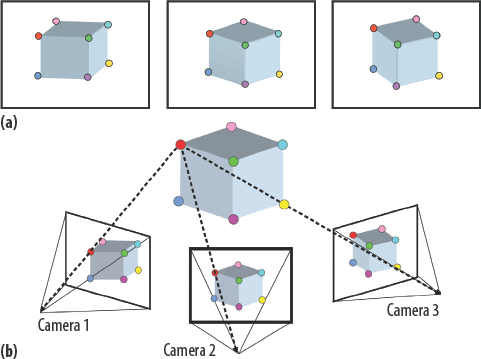
Modeling coral reefs with photogrammetry allows scientists to understand crucial aspects of coral growth, recovery and survival to help them develop restoration plans.
Artificial Reefs
Artificial reefs use man-made structures, such as shipwrecked boats, cinderblocks or old tires, and even 3D printed coral reef structures to mimic some of the characteristics of natural coral reefs. Using unnatural structures to promote coral growth can be highly beneficial for marine ecosystems by providing much needed habitat for corals, fish and invertebrates, but can also promote illegal, misinformed dumping of objects.

Another aspect of artificial reef building is the use of “Coral IVF” or artificial recruitment of baby corals. Because corals only spawn once a year, scientists can collect eggs from healthy coral, rear them in labs, and relocate them to areas that need restoration. This technique has already shown success at restoring and repairing vulnerable coral reefs.
Want to learn more or get involved? Check out these resources!
To learn more about volunteer opportunities, visit the Coral Restoration Foundation!
Visit the NOAA for a deeper dive into conservation strategies!

